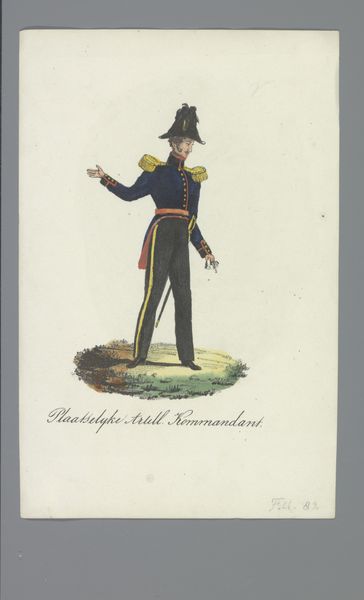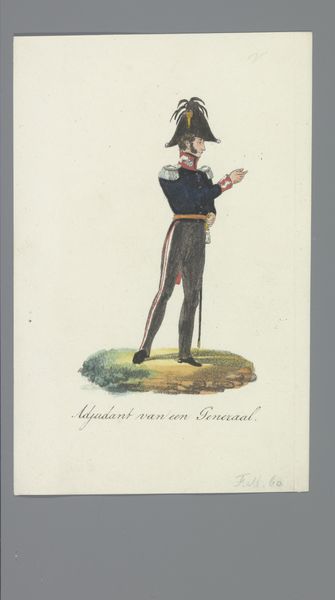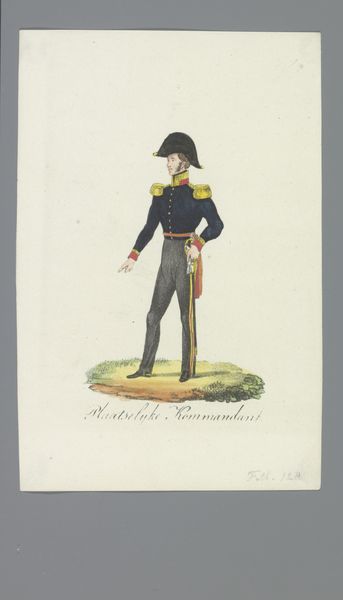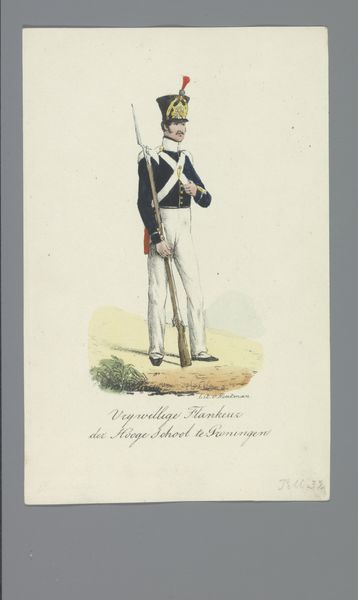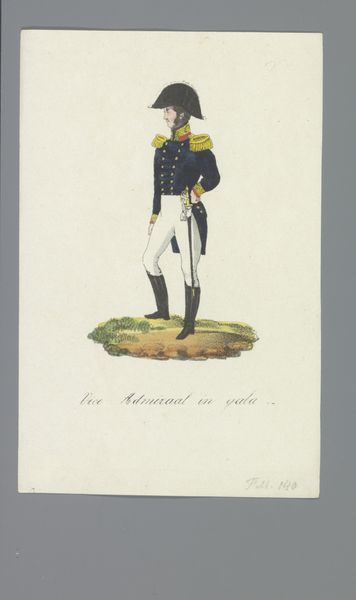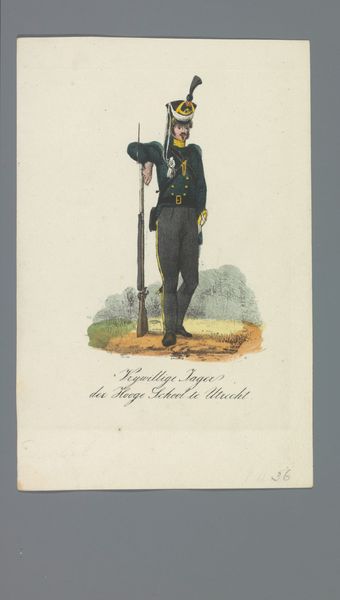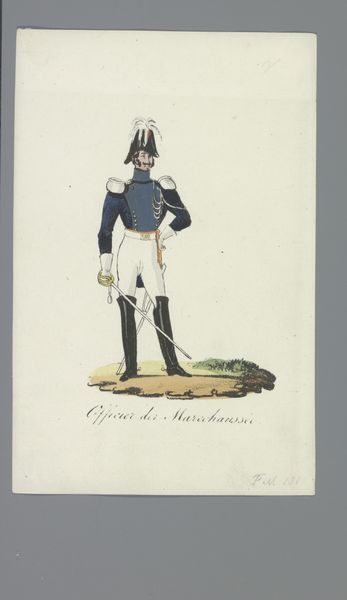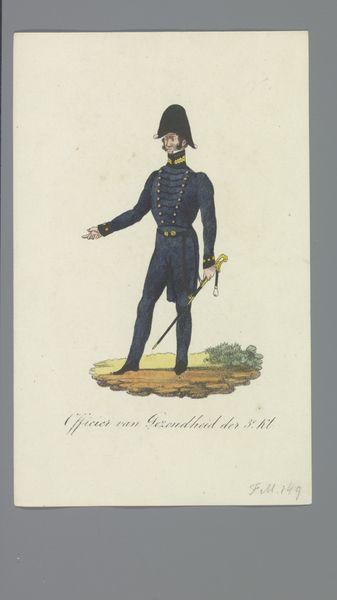
drawing, watercolor
#
portrait
#
drawing
#
figuration
#
watercolor
#
romanticism
#
costume
#
watercolour illustration
#
genre-painting
#
history-painting
Dimensions: height 170 mm, width 110 mm
Copyright: Rijks Museum: Open Domain
Curator: This watercolor illustration from the Rijksmuseum depicts the 'Intendant van Oorlog,' dating to the period of 1835-1850, created by Albertus Verhoesen. Editor: Immediately striking, isn't it? A study in rigid formality and yet there's a fragility to it because it's rendered in watercolor, it’s surprisingly… vulnerable. Curator: The choice of watercolor feels particularly resonant when considered in the context of the military. War, a typically hyper-masculine domain, rendered in such a delicate medium raises interesting questions about gender roles of that time. And, of course, the figure’s role itself. “Intendant van Oorlog”—akin to a quartermaster general—deals with supplies and logistics, hardly the soldier charging the front lines, another subtle contradiction in portrayal. Editor: The artist’s emphasis seems rooted in the symbolic language of his attire, so meticulously detailed. The severe cut of the jacket, the gold embellishments, his hat - all indicators of position, status, and authority, creating a kind of visual lexicon reflecting specific class divisions and political roles. Even the gesture of his hand speaks volumes, conveying perhaps invitation or command. Curator: Indeed, if we consider it from the perspective of cultural studies, this image allows us to investigate not just what this particular intendant represented, but the broader relationship between power, representation, and visibility within military structures. Who gets to be seen, and how? His costume can then be deconstructed as a signifier of socio-political dominance in the early 19th century, which continued to enforce hierarchies of race and class. Editor: I'm intrigued by how these symbolic representations evolve or persist through time. Does his specific military insignia have visual echoes in contemporary military uniforms or political garb? How have such visual symbols shaped, and continue to shape, our perception of authority? Curator: Looking at "Intendant van Oorlog" allows us to interrogate how societal power structures express themselves through art, especially its impact on identity, representation, and the continuous reshaping of visual signs within society. Editor: Absolutely. It makes me wonder what future viewers will deduce from today's analogous representations, and what those chosen symbols will tell them about who we are.
Comments
No comments
Be the first to comment and join the conversation on the ultimate creative platform.


